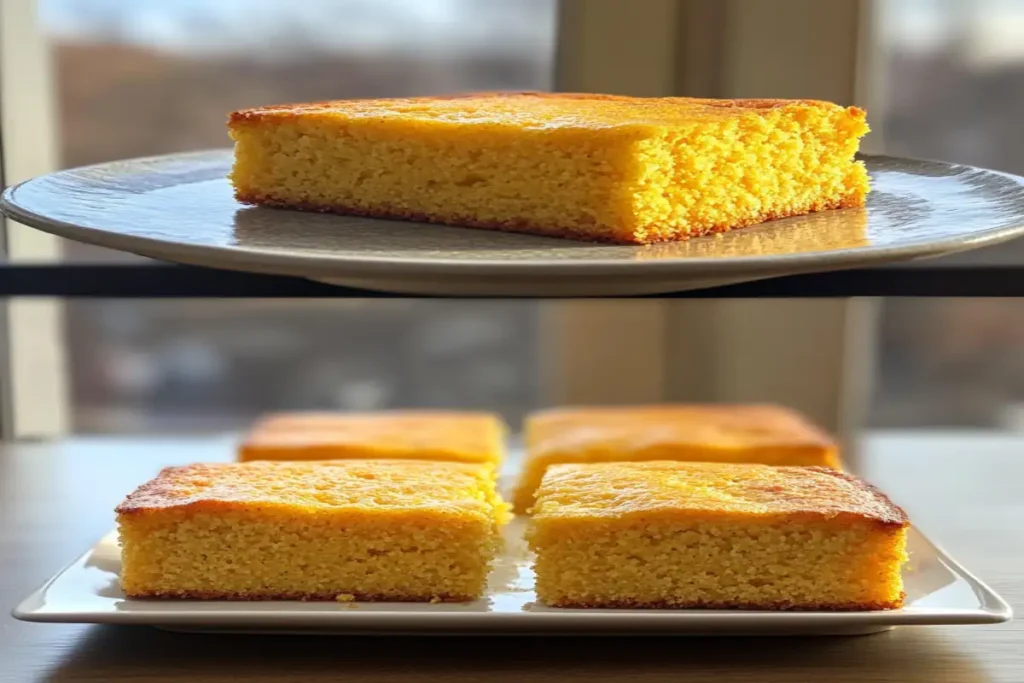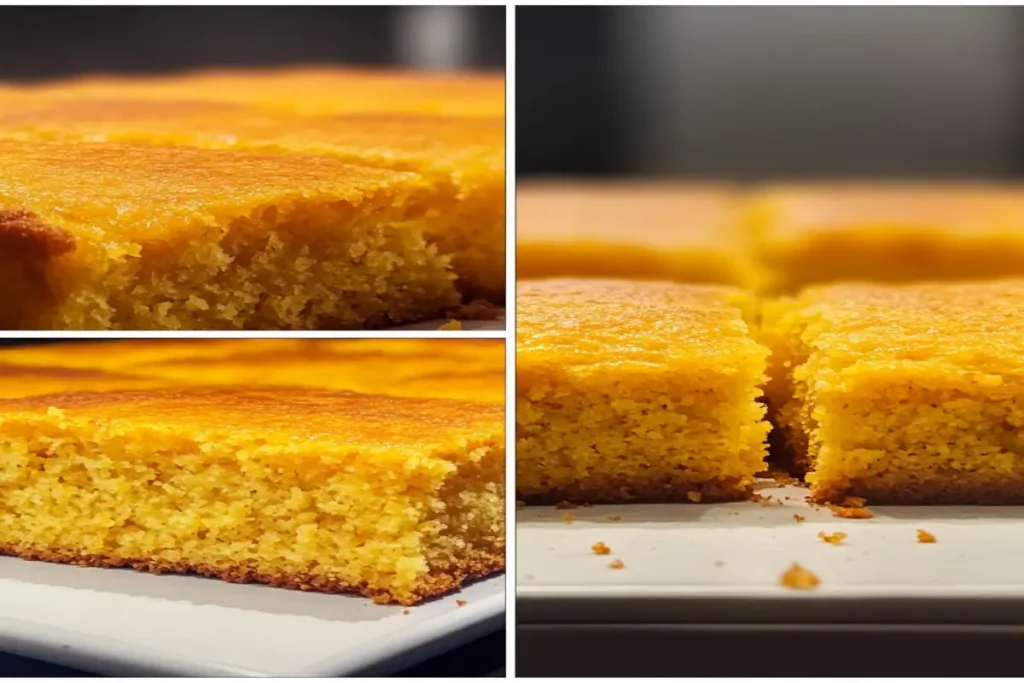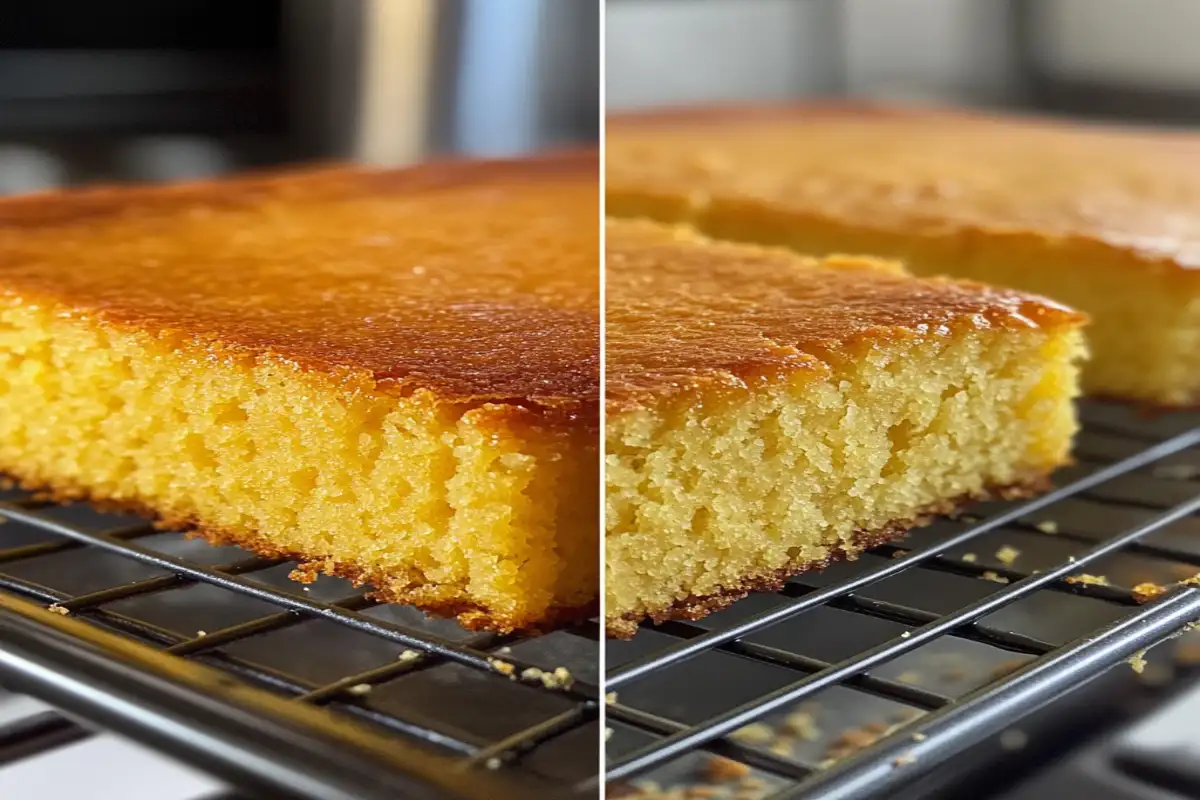Introduction
The contrast between traditional cornbread and its Southern counterpart lies in their flavors, textures, and preparation techniques. Both are staples in American cuisine, yet they have distinct characteristics that make each unique.
Cornbread, as a general term, includes a wide range of recipes influenced by various regions. Southern-style cornbread, however, follows a more specific tradition tied closely to the culture and history of the South.
Across the United States, cornbread takes on regional adaptations, with the South offering a version deeply rooted in its culinary heritage. Understanding these distinctions can guide you in choosing the ideal recipe for your needs or inspire you to try new variations. For more inspiration, you might explore these festive Christmas bread recipes that celebrate cultural traditions.
This article examines the unique qualities of these two styles, focusing on ingredients, cooking methods, and their cultural significance. By exploring these details, you’ll better appreciate what makes each type of cornbread special.
The Historical Roots
The historical origins of cornbread highlight its evolution as a staple of American cuisine. Its beginnings can be traced to Native American cooking, where ground corn served as a vital ingredient. Early settlers adapted these methods, using cornmeal to craft simple and nourishing bread.
In the South, cornbread developed as a regional variation shaped by local agricultural practices and available ingredients. Unlike the sweeter Northern versions, Southern recipes leaned towards savory flavors, reflecting the practical cooking traditions of the area.
As time passed, cornbread became a household essential across the South due to its affordability and versatility. While Northern styles included sugar, the Southern approach prioritized bold, savory flavors, making it a defining feature of the region’s culinary identity. These distinctions illustrate how cornbread adapted to meet the cultural and culinary preferences of different regions. For a hearty complement to cornbread, consider pairing it with a delicious salmon soup.
Key Differences Between Cornbread and Southern Cornbread
To fully grasp the difference between cornbread and southern cornbread, consider these key distinctions:
- Sweetness: Northern cornbread typically includes sugar, while southern cornbread is savory.
- Texture: Southern cornbread is crumbly and dense, whereas Northern cornbread often has a softer, cake-like texture.
- Cooking Fat: Southern recipes frequently use bacon grease or lard, adding richness to the flavor.
- Ingredients: Buttermilk and stone-ground cornmeal are common in southern cornbread, while Northern versions may incorporate flour and milk for a lighter result.
These differences highlight how regional preferences and cultural influences shape each style of cornbread, creating unique culinary experiences.

Ingredients That Define Traditional Cornbread
The difference between cornbread and southern cornbread starts with the ingredients used in traditional cornbread recipes. Northern-style cornbread typically includes:
- Cornmeal: The base ingredient, often finely ground for a softer texture.
- Flour: Combined with cornmeal to create a lighter, more cake-like consistency.
- Sugar: Adds a touch of sweetness to the dish.
- Baking Powder: Ensures the bread rises evenly.
- Milk: Used as the liquid component for a smooth batter.
These ingredients create a cornbread that is versatile and slightly sweet, complementing a variety of dishes. However, this differs significantly from the approach taken in southern recipes. If you’re seeking a lighter alternative, you might also enjoy a healthy potato soup recipe to pair with your cornbread.
Essential Ingredients
Authentic southern cornbread recipes focus on simplicity and bold flavors, emphasizing cornmeal’s natural taste. The key ingredients include:
- Stone-Ground Cornmeal: Provides a coarse texture and robust flavor.
- Buttermilk: Adds tanginess and enhances the bread’s moistness.
- Bacon Grease or Lard: Infuses the bread with a rich, savory flavor.
- Eggs: Help bind the ingredients and add structure.
- Minimal or No Sugar: Maintains the savory essence of southern cornbread.
These ingredients reflect the difference between cornbread and southern cornbread, showcasing the regional flavors and cooking traditions of the South.
Flavor Profiles: How Cornbread and Southern Cornbread Compare
The flavor profiles of cornbread showcase distinct regional differences. Northern-style cornbread tends to have a sweeter taste, which appeals to those who prefer a hint of sugar in their bread. The inclusion of flour gives it a softer, cake-like texture.
Southern-style cornbread, on the other hand, highlights bold, savory flavors that emphasize the natural essence of cornmeal. Ingredients like buttermilk add tanginess, while bacon grease or lard contribute to its rich flavor. This savory version pairs beautifully with hearty dishes such as chili or collard greens, whereas the Northern variety complements lighter, sweeter meals. These contrasting approaches reflect the diverse culinary traditions that define each style.
The Role of Sugar: A Key Debate Between Cornbread Styles
One of the most significant points in the difference between cornbread and southern cornbread is the use of sugar. In Northern cornbread recipes, sugar is a defining ingredient that gives the bread a sweet, dessert-like quality.
However, traditional southern cornbread excludes sugar, focusing instead on savory flavors. This omission stems from the practical cooking habits of the South, where sugar was historically a luxury. Southern cooks relied on the natural sweetness of cornmeal to flavor their bread.
This debate over sugar continues today, with each region proudly defending its preferred style. Whether sweet or savory, both versions offer delicious ways to enjoy cornbread.
Texture Differences: Northern Versus Southern Cornbread
The textures of cornbread vary significantly based on regional styles. Northern recipes often produce a light, fluffy bread with a cake-like consistency. This result is achieved by adding flour and sugar, making it easy to slice and enjoy as a dessert or standalone side.
Southern-style cornbread, however, is denser and more crumbly. Its rustic texture showcases the coarseness of stone-ground cornmeal, which enhances its ability to pair with hearty dishes. It’s particularly well-suited to soaking up sauces and juices without falling apart.
These contrasting textures highlight regional preferences, with each version offering distinct qualities that cater to different culinary traditions and tastes. Both styles remain beloved for their unique attributes and versatility.
Cooking Techniques for Cornbread and Southern Cornbread
The difference between cornbread and southern cornbread is not just in the ingredients but also in the cooking techniques. Northern cornbread is typically baked in a nonstick or glass pan, which helps create a softer crust. The batter is often prepared with a mixer, resulting in a lighter, more uniform texture.
Southern cornbread, however, relies heavily on the use of a cast-iron skillet. The skillet is preheated with bacon grease or butter, ensuring a crispy, golden crust that contrasts beautifully with the crumbly interior. The batter is poured into the sizzling skillet to achieve this signature crust. These techniques highlight the distinct preparation styles that define cornbread and southern cornbread, ensuring each retains its unique characteristics.

Choosing the Right Cornmeal for Your Cornbread Style
Cornmeal selection plays a pivotal role in the difference between cornbread and southern cornbread. For Northern cornbread, finely ground cornmeal is preferred, as it creates a smoother, lighter texture. This type of cornmeal blends easily with flour and sugar, resulting in a more cake-like consistency.
Southern cornbread, on the other hand, calls for stone-ground cornmeal, which provides a coarser texture and a more pronounced corn flavor. The choice between white or yellow cornmeal is often a personal preference, though yellow cornmeal is more commonly associated with traditional Southern recipes. Understanding these differences ensures you choose the perfect cornmeal for your desired cornbread style.
Regional Variations of Cornbread Across the United States
The difference between cornbread and southern cornbread is further illustrated by regional variations across the United States. In the North, cornbread often includes sugar, flour, and even baking soda, creating a sweeter, dessert-like bread.
In the South, cornbread is traditionally savory, dense, and made with buttermilk and stone-ground cornmeal. Meanwhile, in the Southwest, cornbread might incorporate chili peppers or cheese for a spicy twist. Native American versions often feature whole kernels of corn and minimal sweeteners, staying true to the dish’s roots.
These regional variations showcase the versatility of cornbread and the cultural influences that shape its preparation and flavor.
Common Mistakes
Even seasoned cooks can stumble when making cornbread. Understanding the difference between cornbread and southern cornbread can help avoid these common mistakes:
- Skipping Skillet Preheating: In Southern recipes, failing to preheat the skillet can result in a lackluster crust.
- Overmixing Batter: Overworking the batter leads to dense, tough cornbread. Mix just until combined.
- Using the Wrong Cornmeal: Substituting finely ground cornmeal in a Southern recipe may compromise its texture.
- Adding Too Much Sugar: For savory Southern cornbread, sugar should be minimal or omitted entirely.
Pairing Suggestions
The difference between cornbread and southern cornbread also influences how each is paired with other dishes. Northern cornbread’s sweeter profile complements lighter, sweeter meals such as honey-glazed ham, baked beans, or fruit-based dishes.
Southern cornbread, with its savory and crumbly texture, pairs well with hearty fare. Popular pairings include:
- Chili or Stews: Southern cornbread soaks up rich sauces effortlessly.
- Collard Greens: Its bold flavor balances the bitterness of greens.
- Barbecue: The savory bread enhances the smoky flavors of ribs or pulled pork.
These pairings highlight the versatility of both styles, allowing them to enhance a wide variety of meals.
Cultural Significance
Cornbread holds deep cultural significance in Southern cuisine, symbolizing simplicity and tradition. Its history reflects the use of locally available ingredients such as cornmeal and buttermilk, staples that have shaped Southern cooking for generations.
In the South, cornbread is more than just a dish—it’s a communal food often shared at family meals and gatherings. While preparation methods vary slightly across states, the focus on bold, savory flavors remains consistent. This emphasis on tradition and shared experiences sets Southern-style cornbread apart, making it a cherished part of the region’s culinary identity.
FAQs
Why is Southern Cornbread Not Sweet?
Southern cornbread is traditionally not sweet because it reflects the practical cooking habits of the region. Historically, sugar was a luxury ingredient that many Southern families could not afford. Instead of relying on added sweetness, Southern cooks emphasized the natural flavor of cornmeal, creating a savory bread that complemented hearty dishes like stews and greens. Over time, this savory profile became a defining characteristic of southern cornbread, distinguishing it from sweeter Northern variations.
Should You Let Cornbread Batter Rest Before Baking?
Yes, letting cornbread batter rest before baking can improve the final texture. Allowing the batter to sit for about 10 minutes gives the cornmeal time to absorb the liquid, resulting in a more tender and evenly baked bread. Additionally, resting the batter can help stabilize any air bubbles created during mixing, which contributes to a fluffier texture. While not mandatory, this simple step often makes a noticeable difference in the quality of your cornbread.
What Makes Cornbread Unhealthy?
Cornbread can become unhealthy if prepared with excessive amounts of sugar, butter, or processed ingredients. Recipes that include large quantities of sweeteners or fats can increase the calorie count significantly. Additionally, cornbread made with refined cornmeal and all-purpose flour may lack the fiber and nutrients found in whole-grain versions. To make a healthier cornbread, opt for whole-grain cornmeal, reduce added sugars, and use heart-healthy fats like olive oil instead of butter or lard.
What Ethnicity Is Cornbread?
Cornbread originates from Native American cuisine, where early versions were made with ground corn and water. Indigenous peoples shared their methods with European settlers, who adapted the recipes over time. While cornbread has roots in Native American cooking, it has become a staple of Southern cuisine in the United States, embodying a rich cultural blend. Today, it’s celebrated across many ethnicities and regions, each adding their unique twist to this versatile dish.
What to Add to Cornbread Mix to Make It Better?
Enhancing cornbread mix is simple with a few creative additions. For savory variations, try adding shredded cheese, crumbled bacon, or chopped jalapeños. If you prefer a sweeter flavor, mix in a touch of honey, brown sugar, or fresh corn kernels for natural sweetness. Herbs like rosemary or chives can provide a fresh, aromatic twist. Adding a dollop of sour cream or Greek yogurt to the batter can also improve moisture and richness. These customizations allow you to tailor cornbread to your personal taste.
Conclusion: Choosing the Perfect Cornbread for Your Table
Understanding the distinctions between cornbread styles helps you select the perfect option for your table. Whether you enjoy the soft sweetness of Northern recipes or the bold, savory flavors of Southern variations, each has its own charm.
Your preference may depend on the meal or your personal taste, but both versions remain versatile and comforting. Cornbread, in any form, brings warmth and flavor to a variety of occasions. Use this guide to explore the unique qualities of these recipes and savor their enduring appeal.

